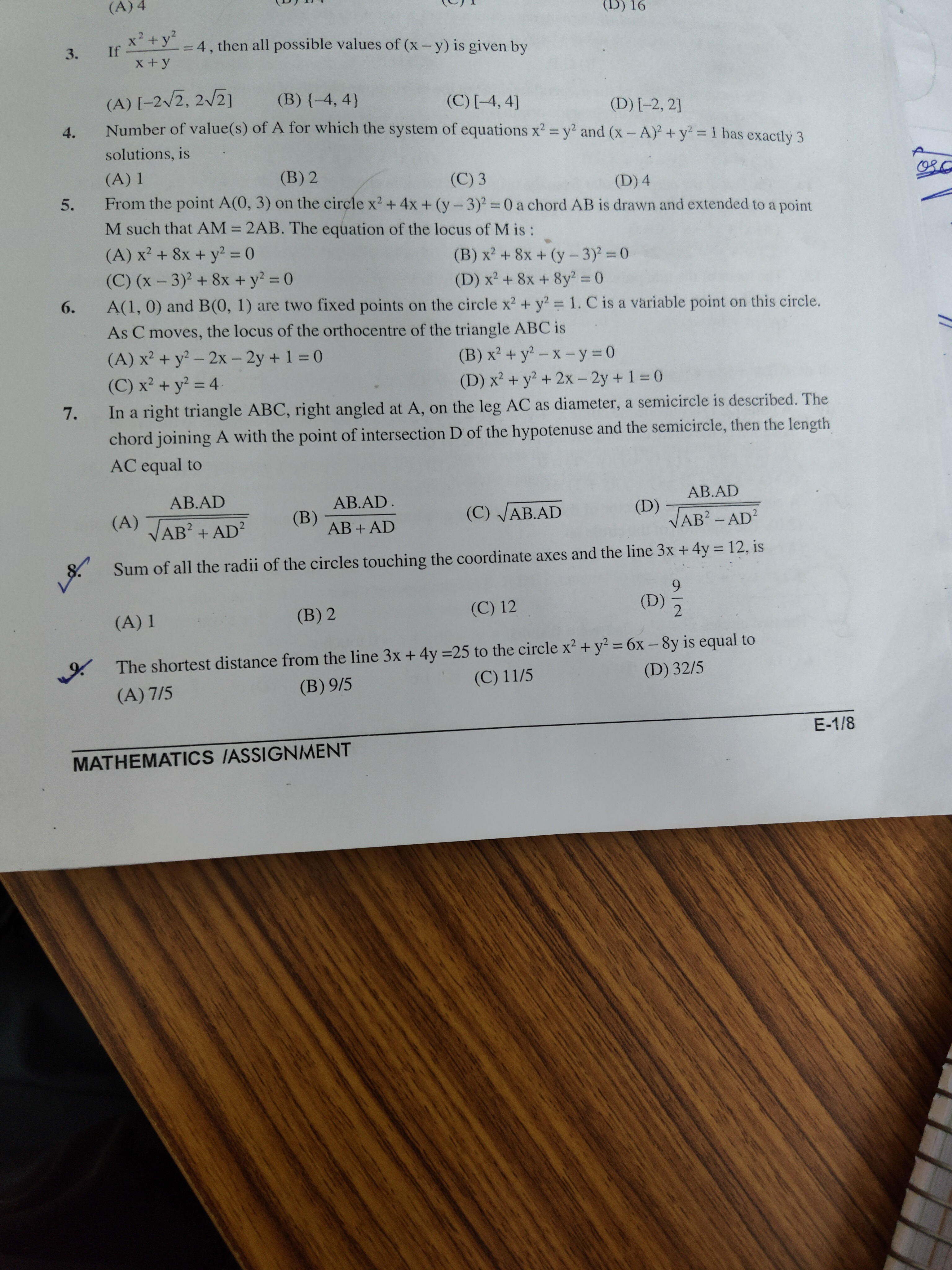Question
Question: If $\frac{x^2+y^2}{x+y}=4$, then all possible values of (x - y) is given by...
If x+yx2+y2=4, then all possible values of (x - y) is given by

[-2√2, 2√2]
{-4, 4}
[-4, 4]
[-2, 2]
[-4, 4]
Solution
Let the given equation be x+yx2+y2=4 This implies x2+y2=4(x+y). Let S=x+y and D=x−y. We want to find the range of D. We know that x2+y2=2(x+y)2+(x−y)2=2S2+D2. Substituting this into the given equation: 2S2+D2=4S S2+D2=8S D2=8S−S2 For x and y to be real numbers, the quadratic equation t2−(x+y)t+xy=0 must have real roots. The roots of this equation are x and y. We know S=x+y. Also, (x+y)2=x2+y2+2xy, so S2=4S+2xy. This gives 2xy=S2−4S. The discriminant of the quadratic t2−St+xy=0 is Δ=S2−4xy. For real roots, Δ≥0. S2−2(S2−4S)≥0 S2−2S2+8S≥0 −S2+8S≥0 S(8−S)≥0 This inequality holds for 0≤S≤8.
Now we need to find the range of D2=8S−S2 for S∈[0,8]. Let f(S)=8S−S2. This is a quadratic function of S, representing a downward-opening parabola. The vertex of the parabola is at S=−2(−1)8=4. The maximum value of f(S) occurs at S=4: f(4)=8(4)−(4)2=32−16=16. The minimum value of f(S) occurs at the endpoints of the interval [0,8]: f(0)=8(0)−02=0. f(8)=8(8)−82=64−64=0. So, the range of D2 is [0,16]. 0≤D2≤16 Taking the square root, we get: −4≤D≤4 Thus, the possible values of (x−y) are in the interval [−4,4].
